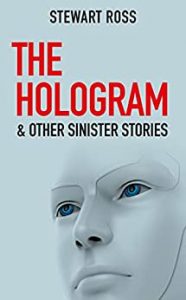Featuring a programme of American classics, the first concert of the new Brighton Philharmonic Orchestra season was pretty lively. Each half began, for instance with a fanfare – Copland’s Fanfare for the Common Man at the beginning and Joan Tower’s witty 1986 response, Fanfare for the Uncommon Woman, after the interval. Both were played with panache and drama and allowed brass and percussion sections a few minutes of glory.
Then came a fine performance of Copland’s Appalachian Spring which, under Sian Edwards’s no-nonsense baton, really pointed up the contrasts in this colourfully orchestrated piece with Ruth Rogers’s violin solo being a high spot. And Edwards really ran with that rather magical moment when the Shaker tune breaks through with a delightful trombone solo from William Brown who, incidentally, drew my attention several times during this concert to which he contributed lots of excellent work.
The high spot of the afternoon, though was an exceptionally joyful performance of Rhapsody in Blue (the Grofe version) with BPO’s artistic director, Joanna MacGregor at the keyboard. I’m not usually a fan of being talked at during concerts but MacGregor and Edwards are such personable, informative communicators, even when they’re not making music, that it was a bonus to hear their thoughts during the moving of the piano to front stage.
Fiona Cross’s opening trill was as sexily played – with lots of rubato – as I’ve ever heard it. And MacGregor delivered what she had just told the audience was really a series of cadenzas which otherwise required her to retreat into the big orchestra texture, with palpable enjoyment and incisive warmth. For most of the piece she seemed to be almost literally dancing on her piano stool. Then, as if that weren’t enough she gave us a high speed, show-piece arrangement of I’ve Got Rhythm as an encore – great fun and her technical ability leaves you breathless.
In Copland’s much less familiar Quiet City, in the second half, there was sensitive duetting from solists John Ellwood on Trumpet and Clare Hoskins on cor anglais. Notheless, it’s a dull-ish piece, scored for strings and horns only and felt like a filler before the grand finale: Catfish Row: Symphonic Suite from Porgy and Bess.
Of course the latter was dramatic. It’s effectively a five movement symphony telling the entire story of Porgy and Bess – with a gloriously big orchestral sound. MacGregor was, this time, tucked away on piano at the back next to percussionist Donna-Maria Landowski who worked hard and with terrific precision throughout this concert – The piece is characterisied by quirky solos, including a lovely louche introduction to the Summertime tune from Ruth Rogers, Peter Adams with an eloquent cello solo and – joy of quirky joys – a deliciously tuneful banjo solo from Martin Wheatley.
Definitely a concert which sent you away with a spring in your step and a head full of earworms. I was pleased to see a fuller house than sometimes and glad to spot a number of children in the audience. Two boys behind me, around seven and five. brought by their parents who were clearly musicians, seemed to be at their first concert – lots of explaining beforehand about how it all works. They sat quietly engrossed. Hurrah.






 The Milk Train Doesn’t Stop Here Anymore
The Milk Train Doesn’t Stop Here Anymore










